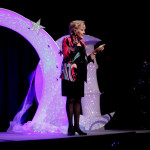1. How is today’s workforce different from that of the early 1990’s?
In the early 1990’s, people made their job a lifetime career. Because employers were caretakers of their workers, a mutual loyalty developed. If an employee did good work, he could plan on a job in the organization until his retirement.
Today, the average worker will have four or five different careers, not just four or five different jobs, in his worklife. Because of downsizing, re-engineering, and other cost-cutting movements, the era of loyalty to an organization has been lost, and employees are having to take charge of their own careers. These workers no longer are willing to work 80 hours a week and sacrifice families and health for an organization that may RIF them next month. Older workers are disillusioned because of the changes, fearful for their job, and, therefore, reluctant to take any risk. On the other hand, younger workers are driven by self-gains rather than a concern for the organization. The result is dismal workplaces that are totally driven by profit, workplaces that are stressful, uncaring, and without passion.
2. Why is employee morale and job satisfaction low?
People are working in conditions that are so stressful and competitive that they have lost all concern for the feelings of individual human beings. It is, in many cases, literally a “dog eat dog” atmosphere. Who would want to spend 8 hours a day in that kind of atmosphere?
3. What qualities are employees looking for in today’s work environment?
A study conducted in 1946, 1981, and 1995 found that the three top things employees want from their jobs are (1) interesting work, (2) full appreciation for the work they have done, and (3) a feeling of “being in on things.” While their managers felt that good wages was the number one motivator for their employees, money was ranked number five on their list. The attributes that really motivate employees are all based on creativity, communication, respect, and trust– the way people are treated.
4. What is meant by a “spirited workplace?”
A spirited workplace is one in which honest communication and creativity abound, celebration and fun are valued, and employees are treated with appreciation, respect, and trust. It is an atmosphere that promotes caring and a sense of purpose that the work each person is doing is important. When a grocery bagger values his job and his customers so much that he puts a “thought for the day” in each bag, that is spirit in the workplace!
5. Explain “creative communication” and how it affects employee morale.
Since we are all bombarded with communications in our lives today–piles of junk mail, dozens of memos and e-mail messages, endless meetings, and media messages that overwhelm, the only way for us to get our communication heard and heeded is to get people’s attention. As I mentioned, the number three thing employees want from their jobs is a “feeling of being in on things”, so honest, open, creative communication is vital in every organization for high employee morale.
Here are three questions to consider when you send any message, whether it is written, electronic, or face-to-face:
1. Will it get the information across clearly and accurately?
This is the business level of the interaction, the real purpose for the communication, the task of meeting some external objective.
2. How will it make the receiver feel?
This is the human level of the interaction and is based on the feelings of the receiver. Look at the format, the words you’ve chosen, the tone of the message, and consider the emotional impact it will have on the human being who receives it.
3. Will it surprise the reader?
This is the element of creativity that is so often missing from our communications.
6. Why is the atmosphere of the work environment so important?
Happy employees are more productive employees, so creating an atmosphere that makes employees feel good about coming to work will impact both morale and productivity. Fill your hallways with inspiring, colorful thoughts. Personalize workspaces so employees feel respected as individuals. Celebrate everything from “National Smile Week” to finishing the budget process. Create a “timeout” place for employees to unwind. One group of employees decorated an unused office space all in black, and when their co-workers came in the next morning, there was a computer banner over the door that read “The Whine Cellar”! People began bringing in stress toys, cartoon books, and stuffed animals, and it soon became everyone’s favorite place to go!
7. How should managers show appreciation for their employees?
Research has shown that employees value a pat on the back, personal note, or appreciative word from their managers much more than money or other formal rewards. Managers can build morale by being out with employees, giving positive feedback many times a day, and learning more about each individual employee and his or her personal lives, hobbies, and passions. That way, managers can give more formal rewards that are truly individualized to the employee, indicating that he or she is special and unique:
- a gift certificate to play a round of golf at a special place for a golfer
- a dinner for two with babysitting for a young father or mother who rarely has a chance to go out
- a current business book for a voracious reader
- a longer lunch hour for the harried working mother
- a special class for the person interested in personal growth and development, or
- an extra casual day for the recent college graduate.
Another way to show appreciation is to surprise employees with a mini-celebration such as renting a pop corn machine for a day or passing out an ice cream treat to everyone.
Encourage daily affirmations throughout the organization. Land’s End and IBM have created small cards to thank one another internally. Other organizations use “Pass It On”™ cards with sayings such as “The difference between ordinary and extraordinary is that little EXTRA!” to give to both employees and customers. A spirit of gratitude throughout an organization will raise the level of all interactions. Create a “Just Because” committee or an Attitude Support Team with volunteers who have a passion for the positive.
8. Is it possible to rebuild respect and trust–especially in organizations that have been downsized?
Respect and trust can only be rebuilt through communication and sharing. Communicate, communicate, communicate. Hold daily 5-10 minute staff meetings and at least once a week a 10-15 minute “state of the company” message from a senior manager. Remember honesty and the “rule of six;” for most adults to internalize something, they must hear it at least six times. End each session with an inspirational “thought for the day.” Give employees permission to grieve the past and then move on. Some organizations hold ceremonies to symbolically let go of the past. Others create “time out” places and “stress-buster” rooms to help employees deal with their emotions. Above all, be human. Let employees see your feelings, too. As managers begin to share even the bad news openly and honestly and with consideration for the humanness of their employees, slowly and surely respect and trust will be renewed.
9. What is meant by “reason for being?”
Francis Likert said, “If a high level of performance is to be achieved, it appears to be necessary for a supervisor or manager to have high performance goals and a contagious enthusiasm as to the importance of these goals.” Are you a contagiously enthusiastic manager? Are you helping your employees focus not only on a job description but also on their very important work? How is what they do each day making someone’s life better? That new sense of purpose will boost self-esteem and add a depth of meaning for which they are desperate.
One of the ways I encourage employees to find a new sense of purpose in their work is challenging them to add their personal signature to their jobs, to find a way to differentiate themselves from others who do the same work they do. CARE Packages for the Workplace contains some wonderful, heartwarming stories of what people are doing to add their personal touch to their jobs from a graphic artist who always puts a piece of sugarless gum in everything he sends out to a United Airlines pilot who writes a handwritten thank you note to several passengers on his flights.
10. What steps can managers take to show empathy towards their workers?
Employees need managers who can empathize with their pain and who honestly try to create an environment in which they feel valued and respected despite all the changes going on around them. The Chinese symbol for listening is made up of two parts–the left side is the ear which demonstrates listening with our intellect while the right side is made up of four different symbols: listening with your full personhood, listening with your eyes for body language, listening with your undivided attention, and the cornerstone of the symbol is the heart. Every day a manager must ask himself, “Am I listening with my heart?” As managers spend more time out of their office actually working with employees, as they ask for their input and ideas, and as they begin to recognize them as human beings and not just workers, they will find a new spirit of trust and partnership developing in their workplaces.
11. How did you develop your motto–“Spreading Contagious Enthusiasm™?”
In my work with organizations all over the world, I have found that when individuals truly understand that they can make a difference in every interaction they have, then they realize they do have CHOICES and that they are not simply victims putting in their time for a paycheck. They can then be the ones to begin to create in their own space an atmosphere of caring, creativity, respect, purpose, and even of fun. Spirit in the workplace can begin with one person and spread throughout the organization. Spreading this contagious enthusiasm has become my mission in all that I do.
© Barbara Glanz Communications. All Rights Reserved.
Barbara Glanz Biography
A member of the prestigious Speaker Hall of Fame and one of fewer than 700 Certified Speaking Professionals worldwide, Barbara Glanz, CSP, CPAE, works with organizations to improve morale, retention and service and with people who want to rediscover the joy in their work and in their lives. She is the first speaker on record to have spoken on all 7 continents and in all 50 states. Known as "the business speaker who speaks to your heart as well as to your head," Barbara is the author of twelve books including The Simple Truths of Service Inspired by Johnny the Bagger®, CARE Packages for the Workplace, and 180 Ways to Spread Contagious Enthusiasm™. Voted "best keynote presenter you have heard or used" by Meetings & Conventions Magazine, Barbara uses her Master’s degree in Adult Learning to design programs that cause behavior change. She lives and breathes her personal motto: “Spreading Contagious Enthusiasm™” and can be reached at bglanz@barbaraglanz.com and www.barbaraglanz.com.




